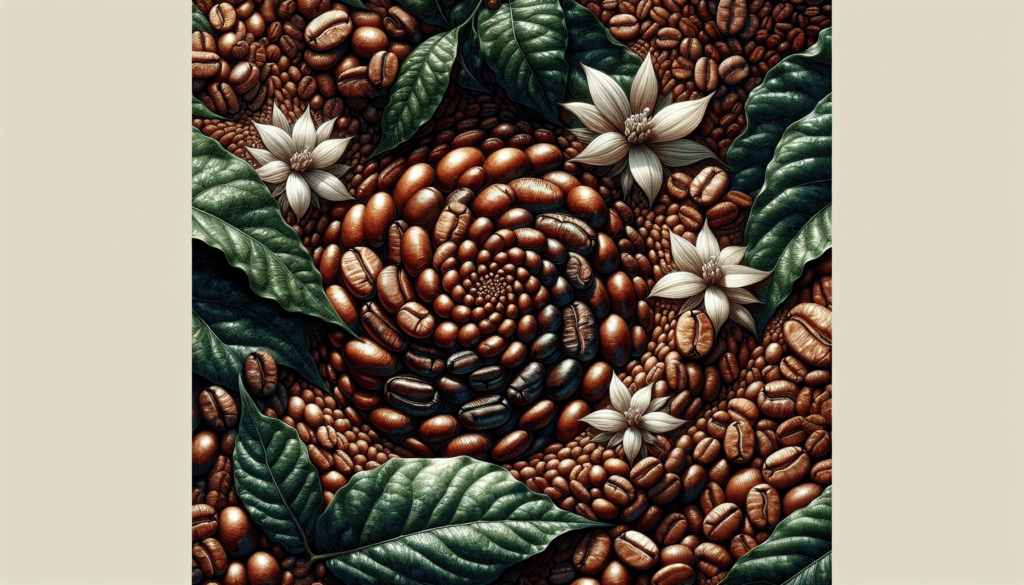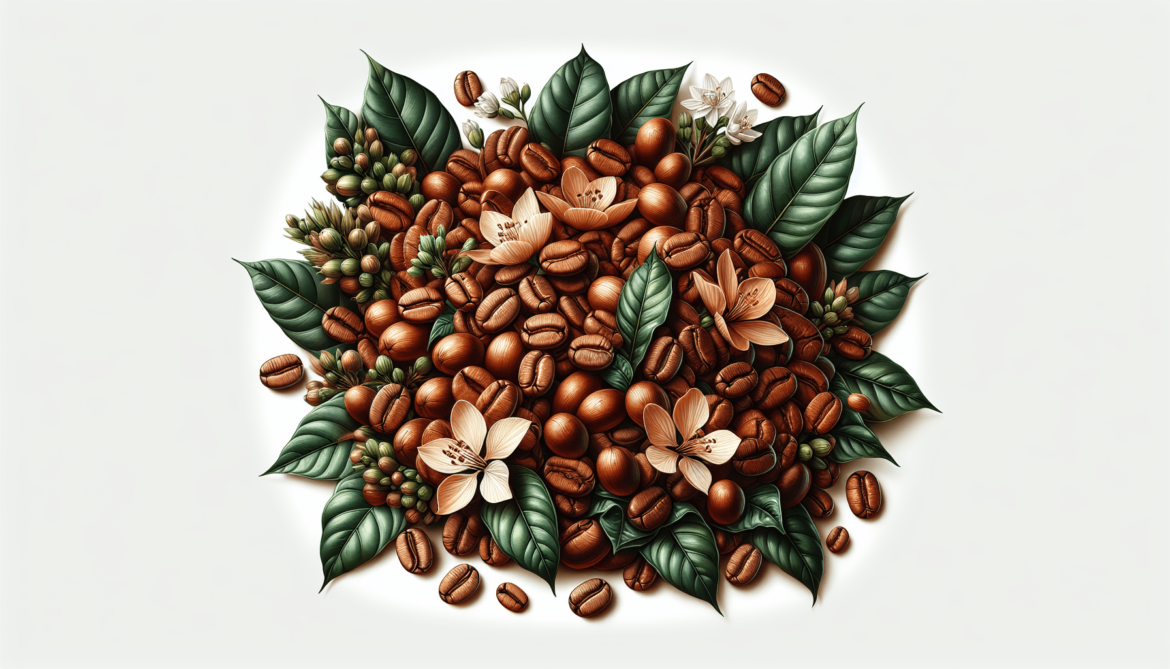Have you ever wondered why Arabica coffee is often considered the cream of the crop when it comes to coffee beans? The rich flavors and aromas that come from these beans contribute to an unparalleled coffee experience. In this article, you’ll gain a deeper understanding of the flavor profile of Arabica beans and what makes them so special.

Understanding Arabica Beans
Arabica beans, scientifically known as Coffea arabica, are among the most popular coffee beans worldwide, accounting for about 60-70% of global coffee production. They thrive in high-altitude regions, offering a growing environment that enhances their complex flavors. You’ll find that Arabica beans are known for their smooth, mild, and slightly sweet taste, often with hints of fruits and floral notes.
History of Arabica Beans
The journey of Arabica coffee can be traced back to the coffee forests of Ethiopia. Legend has it that a goat herder named Kaldi discovered the stimulating effects of coffee when he noticed his goats became energetic after eating the berries. Coffee cultivation began much later in the Arabian Peninsula, particularly in Yemen, where it slowly spread across the globe.
Characteristics of Arabica Beans
Arabica beans possess distinct characteristics that set them apart from their Robusta counterparts. Let’s break it down:
| Feature | Arabica Beans | Robusta Beans |
|---|---|---|
| Flavor Profile | Sweet, fruity, complex | Bitter, earthy, low acidity |
| Caffeine Content | Lower (about 1.2% to 1.5%) | Higher (about 2.2% to 2.7%) |
| Shape | Oval and flat with a curved crease | Rounder and straighter |
| Growing Conditions | Prefers high altitudes (600-2,200m) | Thrives at lower altitudes (0-600m) |
| Climate | Requires cooler temperatures | More resilient to varying climates |
These traits contribute to the rich flavor profile that many coffee lovers crave.
Factors Influencing the Flavor Profile of Arabica Beans
Several factors play a crucial role in defining the flavor profile of Arabica beans. Understanding these can enhance your appreciation for the nuances found in your cup of coffee.
Altitude
The altitude where Arabica beans are grown significantly influences their flavor. Higher altitudes lead to slower maturation of the beans, allowing for more flavor development. Beans grown at altitudes above 1,200 meters are often deemed superior.
Climate
Climate conditions, including temperature, sunlight, and rainfall, contribute to the overall taste of the beans. Arabica beans thrive in a temperate climate with moderate rainfall, which helps them develop their complex flavors over time.
Soil Composition
The type of soil in which the coffee plants are grown affects nutrient uptake and, consequently, flavor. Volcanic soil, rich in minerals, is often associated with high-quality Arabica coffee. Soil pH, drainage, and fertility all play key roles in how beans develop their unique taste.
Processing Methods
After harvesting, the way Arabica beans are processed can impact their flavor. Common methods include:
-
Washed (Wet) Processing: This method results in a cleaner and brighter flavor by removing the fruit before fermentation. It often highlights the acidity and floral notes of the beans.
-
Natural (Dry) Processing: Here, the whole cherry is dried in the sun before being hulled. This method can create a fruitier and fuller-bodied coffee, as the beans absorb flavors from the fruit.
-
Honey Processing: This hybrid method leaves some mucilage on the bean during drying, resulting in sweetness and complexity while still maintaining clarity.
Each method brings its own twist to the flavor profile, allowing for a range of experiences.
Flavor Profiles in Arabica Beans
Now that you understand the factors influencing flavor, let’s explore the specific notes you might encounter in Arabica coffee.
Fruity Notes
Arabica beans frequently exhibit fruity flavors, which can range from berries to citrus. For example:
- Blueberry: A well-known note, often found in Ethiopian Arabica.
- Cherry: This flavor note can be rich and vibrant, commonly present in Central American varieties.
- Citrus: Bright and zesty, citrus notes can provide an exciting contrast to the sweetness.
Floral Notes
The delicate floral notes in Arabica beans can add an inviting aroma and complex flavor. Some common floral notes include jasmine, hibiscus, and rose. These notes create a sensory experience that can transport you to lush gardens.
Chocolate and Nutty Flavors
Arabica beans can also present underlying chocolate and nutty flavors.
- Chocolate: Ranges from milk chocolate sweetness to dark chocolate richness.
- Nutty: Almonds, hazelnuts, and pecans can also come through, adding warmth and body to your cup.
Spice and Herbal Notes
In addition to fruity and floral flavors, some Arabica beans may exhibit spicy or herbal characteristics. These could include notes such as cinnamon, clove, or even rosemary, contributing to a more nuanced tasting profile. They offer a comforting complexity to the brew.
Regions Known for High-Quality Arabica Beans
Different regions around the world produce unique flavor profiles, thanks to the diverse growing conditions. Let’s take a closer look at some of the notable regions.
Ethiopia
Ethiopia is often regarded as the birthplace of Arabica coffee. The variety of microclimates within the country allows for a broad range of flavors. Ethiopian Arabica is known for its bright acidity, floral aromas, and fruity notes, often reminiscent of berries and stone fruits.
Colombia
Colombian Arabica beans are prized for their smooth, well-balanced flavor. With medium acidity and nutty undertones, they often feature hints of caramel and chocolate. The lush mountainous terrain creates ideal conditions for cultivating high-quality coffee.
Costa Rica
Costa Rican Arabica stands out for its bright, lively acidity and a clean, crisp taste. Common notes include green apple, honey, and citrus, making it an excellent choice for those who enjoy a refreshing cup.
Brazil
Brazil is the world’s largest producer of coffee and primarily grows Arabica beans. Brazilian Arabica often has a nutty, chocolatey profile with low acidity. The beans tend to produce a full-bodied cup that is smooth and easy to drink.
Guatemala
Guatemalan Arabica beans are known for their rich, full-bodied flavor and a complex array of tasting notes ranging from cocoa to fruity nuances. The unique highland regions of Guatemala contribute to a range of flavors, making them a favorite among coffee aficionados.

Brewing Methods for Arabica Coffee
To fully appreciate the complex flavors of Arabica beans, the brewing method you use can make a significant difference. Here are some popular methods:
Pour-Over
The pour-over method allows for precise control over the brewing time and water temperature, ensuring that you extract the best flavors. This method enhances the brightness and clarity of Arabica coffee, making it ideal for beans with floral and fruity notes.
French Press
Using a French press creates a rich, full-bodied coffee. This method captures the oils and sediments in the brew, resulting in a darker flavor profile that suits those who enjoy chocolatey and nutty Arabica varieties.
Espresso
Espresso brewing creates a concentrated shot of coffee that packs intense flavors into a small cup. Choosing high-quality Arabica beans can offer delightful notes of sweetness and acidity, making for a complex shot.
Cold Brew
If you prefer a smoother, less acidic drink, cold brew is a fantastic choice. This method utilizes cold water and an extended steeping time, resulting in a sweeter and mellow flavor profile that highlights the caramel and chocolate characteristics of the beans.
Pairing Arabica Coffee with Food
To enhance your coffee experience, consider pairing your Arabica brew with food that complements the flavors. Here are some tasty combinations:
Fruity Arabica
If your coffee has prominent fruity notes, try pairing it with:
- Berry Muffins: The fruitiness of the muffins will accentuate the berry notes in your coffee.
- Cheesecake: The creamy texture balances the acidity in fruity Arabica.
Nutty and Chocoaltey Arabica
For coffee with nutty or chocolate flavors, consider:
- Chocolate Croissant: The buttery pastry can meld beautifully with chocolatey notes.
- Almond Biscotti: The nutty flavor pairs well with the rich undertones of the coffee.
Floral Arabica
When enjoying floral Arabica, go for lighter options like:
- Vanilla Scones: The gentle sweetness enhances floral notes.
- Lemon Tart: The acidity of the lemon can contrast nicely with the flavors in your cup.
By choosing the right food pairings, you elevate your coffee-drinking experience.
Conclusion
Are you ready to savor the rich flavor profile of Arabica beans? By understanding the characteristics, influences, and brewing techniques, you can fully appreciate the unique qualities these beans offer. With their smooth textures, vibrant flavors, and enticing aromas, Arabica coffee is truly a treasure worth enjoying.



